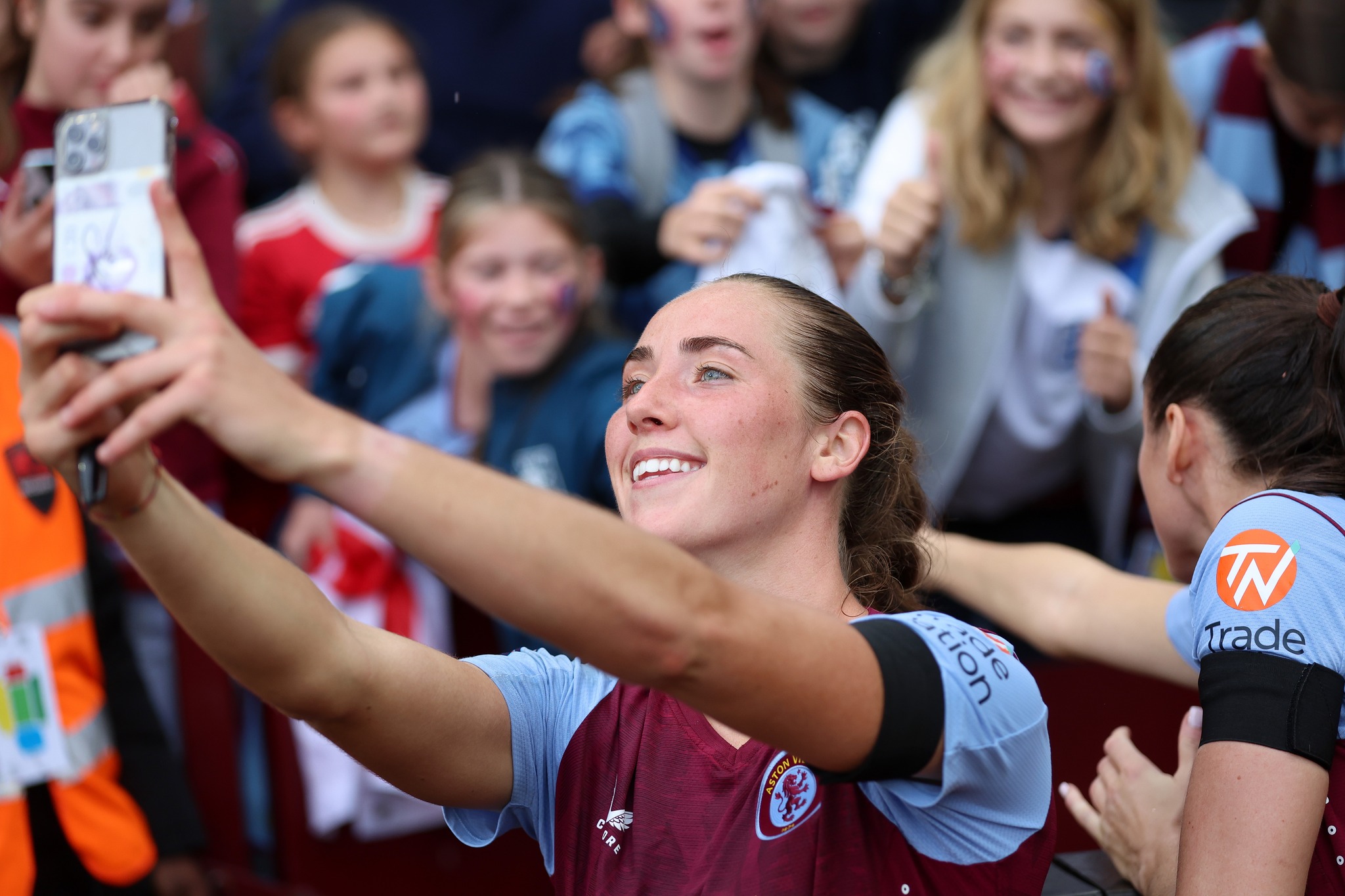
Sports Writer Lucy Blitz defends WSL players amid controversy over their changing attitudes towards fans
Since the Women’s Super League took off in 2011, the competition has consistently demonstrated a close relationship between players and fans. Accessibility has become a key feature of the league, something that the men’s top-flight has been unable to offer due to players carrying a celebrity profile that often places them too far out of reach. As a result, WSL fans asking for autographs and shirts are commonplace at matches, with players mostly able to meet requests. However, the growth of the women’s game beyond the 2019 World Cup and the 2022 European Championships has made old expectations increasingly difficult to achieve.
Following the EUROs last year, WSL audiences increased by 200% after the Lionesses’ remarkable victory at Wembley Stadium. Such a surge in crowds marks huge progression for the women’s top division, and further records have been broken already this season with Arsenal welcoming 54,115 fans to the Emirates for their season opener against Liverpool. But with an increase in attendance comes the continued (and unattainable) expectation of mass autograph signings and kit giveaways from players following the final whistle. Hundreds of fans hope for a timely interaction with their favourite footballers, regardless of a win or draw, and as a result, rush to the touchline at around the eighty-minute mark in order to grab the best-placed spot.
…with an increase in attendance comes the continued (and unattainable) expectation of mass autograph signings
Take Meadow Park as an example. With a capacity of 4,500, post-match greetings with the team are easier to manage at Arsenal’s long-term home. WSL-loving Ellie Cox recalled her first trip to the ground in 2019, explaining that after the match, “the players spent an hour walking around and talking to everybody”. But beyond the EUROs, manager Jonas Eidevall has pushed for a greater number of fixtures to be held at the Gunners’ grand stage at the Emirates, a stadium that can hold 13x what Meadow Park can. Combine a greater audience with the emerging celebrity profiles of the Lionesses’ and several key WSL stars, and the two produce a huge number of safety risks and disruptions for fans as full-time approaches.
Cox has seen fans “block the whole gangway” trying to grab a selfie with their favourite stars, causing a great number of issues for fellow supporters and for stewards around grounds. Meanwhile, Arsenal fan Ellie Harris spoke of her own experiences at Meadow Park and Bescot Stadium, recalling games where for the last five to ten minutes, “you can’t see anything as people rush down to fight for autographs and photos”. What’s surprising is the desire from parents of young fans, who Harris explains are often more demanding than the children and expect post-match interactions as a given. Mary Earps dealt with one such instance earlier this week, after the mother of a fan wrote on Instagram that the goalkeeper was “far too busy and important to stop for her fans” following Man United’s 5–0 win over Everton.
Harris and Cox also spoke of the disruption to post-match practices that interactions can cause, noting that footballers play 90 minutes and are expected to speak to fans before recovering from intense games. Not only that, but team losses don’t mitigate fan expectations. Players are put under just as much pressure to sign autographs after a defeat than after a win. Supporters forget that WSL players are human, and become increasingly critical when stars head for the tunnel rather than spending hours chatting with fans on the touchline. What’s more frustrating for Harris is that given the small capacity of Meadow Park and other WSL stadiums, tickets are increasingly hard to come by — and seem to be going to fans who are there for a photo, rather than to watch a good game of football.
…fans must appreciate that the WSL has evolved considerably since 2011.
Not only are players expected to interact with supporters, but fans often plead for their favourite strikers’ boots or a shirt from their team. While Brighton midfielder Katie Robinson knows that “it’s important to give back to the fans” due to their longstanding support, younger children often hold a misguided assumption that footballers, particularly female footballers, have spare pieces of kit to give out. Yet many WSL players are only given two or three pairs of boots a season, as a result of reduced sponsorship compared to male footballers. For clubs and players with less financial backing, shirts, and particularly boots, may not be so easily replaceable compared to those with a greater budget.
So, what’s the solution? Manchester City have developed ‘Autograph Alley’, a sectioned-off area behind Joie Stadium’s West Stand where a handful of randomly selected fans can meet first-team players beyond the game. City’s method provides a more relaxed environment for interactions between supporters and players — but this shouldn’t be expected of every team across the top-flight. Clubs may not have the capacity or the manpower to introduce similar schemes just yet, while teams wishing to move to larger stadiums must find a quick fix to the pitch-side panic in the absence of an “Alley” in their new home.
More than anything, fans must appreciate that the WSL has evolved considerably since 2011. As support rockets and crowds increase, players cannot be held to the same standards that they were ten years ago — otherwise they will keep falling short of expectations. While it remains just as important to inspire the next generation of young girls and boys, doing so shouldn’t come at the cost of another supporters’ experience or the safety of both fans and players.
Check out the latest Sports articles here:
Red Devils score stoppage time winner against Villa in WSL opener

Comments